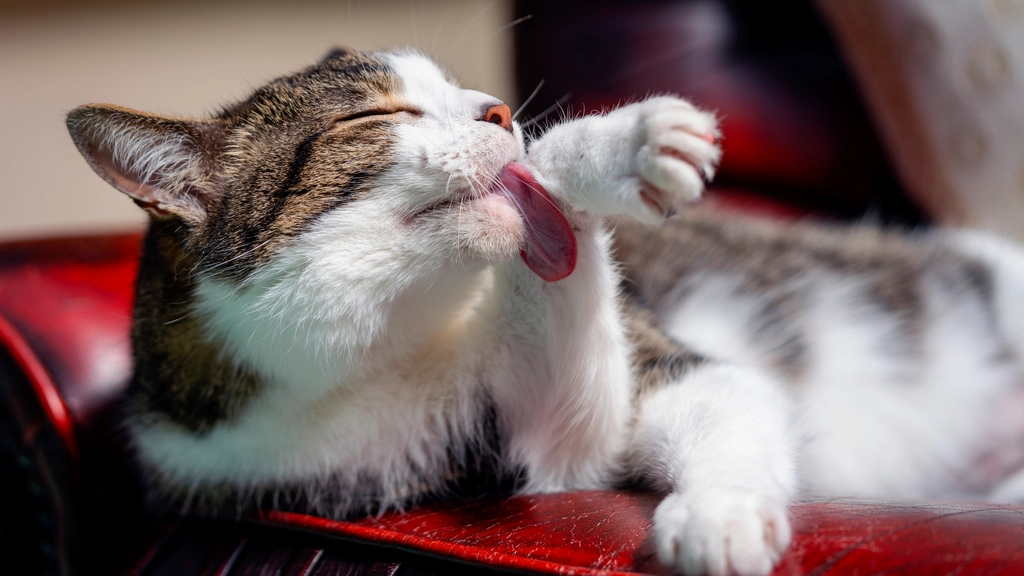Have you ever found yourself mesmerized by the silky, flowing fur of a Persian or the majestic mane of a Maine Coon, only to hear whispers that long-haired cats are aloof or hard to connect with? It’s a question that divides cat lovers and sparks lively debates online: are long-haired cats truly harder to bond with? Some say their beauty comes with a price—others swear their fluffy friends are the most affectionate companions they’ve ever known. Let’s unravel the mystery and explore the truth behind these furry legends.
The Myth of the Untouchable Fluff

Long-haired cats often seem like creatures from a fairy tale, with their luxurious coats and regal posture. This elegance sometimes gives people the impression that they’re distant or hard to approach. Many believe their beauty makes them aloof, but in reality, their personalities are as varied as their fur patterns. The myth likely began because their fur can hide facial expressions and body language, making it harder for humans to read their moods. But just because they look mysterious doesn’t mean they’re less loving or more difficult to bond with. The truth is, every cat—regardless of hair length—has its own unique way of showing affection.
Understanding Feline Personalities

It’s easy to assume that hair length has a direct impact on personality, but genetics, upbringing, and early socialization play a much bigger role. While some breeds of long-haired cats are known for being reserved, others, like the Ragdoll, are famously affectionate and crave human attention. A cat’s environment and experiences shape how it interacts with people. If a long-haired kitten is raised in a loving, interactive home, it’s likely to be just as friendly as any short-haired feline. The key is to recognize that, like people, cats have distinct personalities that can’t be judged by appearances alone.
The Role of Grooming in Bonding

One undeniable fact about long-haired cats is that they need more grooming. This can feel like a chore, but for many, it’s a golden opportunity to connect. Brushing your cat isn’t just about keeping mats at bay; it’s a chance to offer gentle touch, soothing words, and build trust. Over time, many cats come to enjoy this ritual, associating it with positive attention. It’s a bit like a spa day for your feline friend, and it can create some of the most peaceful, intimate moments between owner and pet.
Body Language: Reading Past the Fur

Long-haired cats can sometimes hide their true feelings beneath their thick coats. Their ears, tails, and even whiskers can disappear into the fluff, making it harder to read their signals. This can lead to misunderstandings about their mood or comfort level. Learning to spot subtle cues, like the way they blink or their soft purring, becomes extra important. Once you get the hang of it, you realize these cats have just as much to “say” as their short-haired cousins—sometimes you just have to listen a little harder.
Common Long-Haired Breeds and Their Temperaments

Not all long-haired cats are cut from the same cloth. Persians are known for their calm, almost regal demeanor, enjoying quiet affection. Maine Coons, despite their wild appearance, are often playful and friendly, dubbed “gentle giants” by fans. Ragdolls love to be held and will go limp in your arms, while Norwegian Forest Cats are adventurous but loyal. These examples show that hair length doesn’t dictate personality; breed and upbringing matter far more in how easy it is to form a bond.
The Power of Patience

Bonding with any cat takes time, but long-haired cats might require a little extra patience, especially if they’re shy or sensitive. New environments, unfamiliar people, or loud noises can make them hesitant to trust. Giving them space, speaking softly, and letting them approach on their own terms helps build a foundation of trust. Patience is the secret ingredient in any relationship, and with time, even the most reserved long-haired cat can become a devoted companion.
Building Trust Through Play

Interactive play is a fantastic way to break the ice. Wand toys, feathers, and even simple balls of yarn can coax a reserved long-haired cat out of its shell. Playtime mimics hunting, tapping into their natural instincts and building confidence. When you play with your cat, you become associated with fun and positive experiences. This playful connection often leads to deeper trust and affection over time, regardless of hair length.
Addressing Health Concerns Together

Long-haired cats are more prone to certain health issues, like hairballs or matting, which can make them grumpy or withdrawn if they’re uncomfortable. Attending to their needs—regular brushing, check-ups, and a healthy diet—demonstrates care and reliability. When a cat feels safe and well-cared for, it’s much more likely to seek out affection and connection. Health becomes a bridge to a stronger bond.
Overcoming Initial Hesitation

If you’ve recently adopted a long-haired cat, you might notice an initial period of caution. New sights, smells, and routines can be overwhelming, especially for a cat unused to handling. The key is to let them set the pace. Gentle introductions, quiet spaces, and soft voices help ease their nerves. Over time, your consistency reassures them that they’re safe, paving the way for a lasting bond.
Daily Routines That Strengthen Bonds

Cats thrive on routine, and long-haired breeds are no exception. Feeding, grooming, playtime, and cuddling at the same times each day create a sense of security. Over time, your cat will begin to anticipate these moments, seeking you out for the routines they enjoy most. This predictability helps them relax and trust you, making it easier to build a strong, affectionate relationship.
Affection: How Long-Haired Cats Show Love

Long-haired cats might not always jump into your lap right away, but they have their own special ways of showing affection. Some might gently headbutt you, while others curl up nearby or follow you from room to room. Don’t be fooled by their quiet demeanor—these small gestures are their way of saying, “I trust you.” Learning their language of love is part of the bonding adventure.
The Importance of Safe Spaces

All cats need a place where they feel secure, but long-haired cats, with their heightened sensitivity, especially benefit from cozy hideaways. Providing boxes, soft beds, or high perches gives them a retreat when they need a break. When your cat knows it has a safe zone, it becomes more confident, making it easier to venture out and form connections with you.
Dealing With Shedding and Allergies

One challenge with long-haired cats is their shedding, which can be overwhelming for some owners and even deter close contact. Regular grooming helps, but it’s also important to manage allergies with air purifiers and frequent cleaning. This extra effort can strengthen your bond, as your cat senses your willingness to care for its needs, leading to more moments of closeness.
Children and Long-Haired Cats

Families often wonder if long-haired cats are suitable for children. The answer depends more on the individual cat’s temperament than its coat. Teaching children to be gentle, respect boundaries, and participate in grooming can lay the groundwork for a beautiful friendship. Long-haired cats, with their soft fur, often become beloved cuddle buddies for gentle, patient kids.
Multi-Cat Households: Making It Work

Introducing a long-haired cat to a household with other pets can be a delicate process. Their scent and grooming habits may initially confuse other cats. Slow introductions, separate spaces, and supervised playdates help everyone adjust. In time, bonds can form not just with humans, but between feline companions as well.
Travel and New Environments

Long-haired cats might find travel or moves particularly stressful due to their sensitive nature. Bringing familiar items, like a favorite blanket or toy, can ease transitions. Taking things slow and allowing your cat to explore new spaces at their own pace helps minimize anxiety, making it easier to maintain your bond wherever life takes you.
Senior Long-Haired Cats: Nurturing Lifelong Bonds

As cats age, their needs and personalities may change. Senior long-haired cats might become more vocal, seek more attention, or prefer quiet companionship. Regular grooming, gentle handling, and soft bedding become even more important. These golden years can be a time of deep connection, as mutual care and understanding grow stronger.
Training Long-Haired Cats: Yes, It’s Possible!

Many people think cats can’t be trained, but long-haired cats can learn tricks, routines, and even leash walking with patience and positive reinforcement. Training sessions offer mental stimulation and create new opportunities for bonding. Celebrating small successes—like sitting on command or using a scratching post—builds confidence and strengthens your relationship.
Handling Rejection: When Bonding Takes Time

Not every cat is quick to warm up, and sometimes long-haired cats need extra time to trust. It can be disheartening when a pet hides or resists affection, but persistence pays off. Quietly sharing space, reading to your cat, or simply sitting nearby lets them know you’re there without pressure. Eventually, most cats will seek out companionship on their own terms.
Celebrating the Unique Joy of Long-Haired Cats

There’s something magical about the presence of a long-haired cat—the way their fur ripples in the sunlight, the soothing sound of their purr, the quiet strength in their gaze. Bonding with them may take a little more patience and effort, but the reward is a relationship filled with trust, comfort, and shared moments of joy. The journey is as beautiful as the destination.
What It All Comes Down To

Whether a cat is long-haired or short-haired, the real secret to bonding lies in understanding, patience, and love. Long-haired cats may present unique challenges, but they also offer unique rewards. Every brushstroke, every shared glance, and every gentle purr brings you closer together. So, are long-haired cats harder to bond with? The answer depends on your willingness to embrace their needs and cherish the moments you share.

Growing up traveling and experiencing new cultures and wonders, I have had a passion for nature, adventuring, photography, and videography. I am currently working towards a BSc in Biodiversity and Ecology at Stellenbosch University, and I hope to specialise in Marine Sciences one day.
Please send any feedback to Feedback@animalsaroundtheglobe.com






